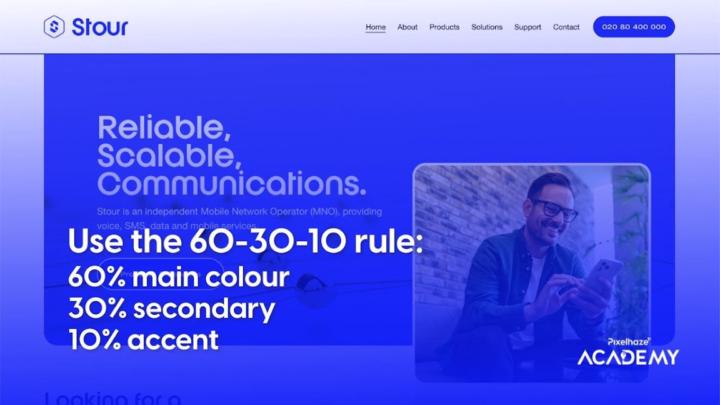
Write something
The 60-30-10 rule in web design
Here's how we use the 60-30-10 rule to anchor a white and blue-themed web design (for Stour). Keep your base colour at 60 percent, a secondary colour at 30 percent, then add 10 percent of an accent for contrast. This can give your site a clean, focused look. - 60%: White (in this example) - 30%: Brand colour - 10%: Accent colour for highlights or calls to action The calls to action will stand out with this approach. Have you tried this approach in your design?
2
0

Why Minimalist Web Design Converts Better for Small Business Owners
I've built over 3,000 websites, and here's what I can tell you with absolute certainty: Minimalist design works. Especially for small businesses. Here’s why: 🧠 Clearer Focus = Better Decisions Too much on the page? Visitors freeze. Clean design = clear next steps. ⚡ Loads Faster Less clutter means faster pages. Faster pages = better SEO + fewer drop-offs. 📱 Mobile-First Friendly Minimalist layouts adapt better on phones—where most traffic happens now. 💷 Cheaper to Build & Easier to Maintain Fewer moving parts = faster launches + less maintenance overhead. If your site is trying to do too much, it’s probably doing nothing well. 👉 Want to improve conversions on your site without a full rebuild? Start by removing one thing from your homepage that doesn’t serve a clear purpose. Comment below: What’s one thing on your homepage you know could go? Let’s tidy things up!

Hate having a client looking over your shoulder while you're designing? We've made a business form it! 👀
Now, I know what some designers might be thinking.. Why on earth would you do that? Clients don’t always know the ins and outs of design. They might hover over my shoulder, questioning my choices, and it could be a distracting nightmare. But this approach makes the entire process easier, faster, and more collaborative, read more below: https://www.pixelhaze.studio/blog/designing-with-the-client-looking-over-your-shoulder
2
0

Evolution of websites - How design trends have impacted the biggest names
Here's a thread showing how some of the most famous websites have evolved over the years, highlighting key differences and changes in design approach from then until now.

What Does a UX/UI Designer Do in Web Design?
Hey everyone, I wanted to share some insights into what UX/UI designers actually do in web design. It’s a topic that often comes up in our community, so let’s break it down in a way that makes sense for anyone diving into web design. What’s the difference between UX and UI? UX (User Experience) is about how something feels when you use it. Whether it’s navigating a website, completing a form, or finding the right information, a good UX design makes the experience smooth and intuitive. UI (User Interface), on the other hand, focuses on how everything looks. It’s the visual layer—buttons, fonts, colors, and layouts—that sits on top of the user experience framework. Think of UX as the skeleton and UI as the skin that brings it to life. How do UX and UI work together? Great design happens when UX and UI work seamlessly. A UX designer maps out how a visitor should journey through the site, ensuring every step feels logical. The UI designer then styles this journey, making it visually appealing and easy to interact with. A good UX/UI designer will ask questions like: - How can we make this website easy to use? - Does this button stand out enough to click? - Where should the most important information go? Why does it matter? Poor UX/UI can frustrate visitors, and no one sticks around on a frustrating website. But a thoughtful design can guide users, build trust, and boost conversions. Remember, it’s not just about looking good; it’s about working well too. Tools of the trade Some popular tools UX/UI designers use include Figma, Adobe XD, and even Squarespace for simpler builds. But the real secret? Testing. Designers don’t just throw designs out there and hope for the best—they test, gather feedback, tweak, and repeat until it works. What can you take away from this? If you’re just starting out or building your own website with something like Squarespace, you don’t need to be a professional UX/UI designer to apply these principles. Here are a few practical tips to keep in mind:
1
0

1-20 of 20

skool.com/website-builders
Boost your digital skills by mastering Squarespace, Canva, ChatGPT & More.
A community for Designers, Business Owners and Marketers 🌟
Powered by


